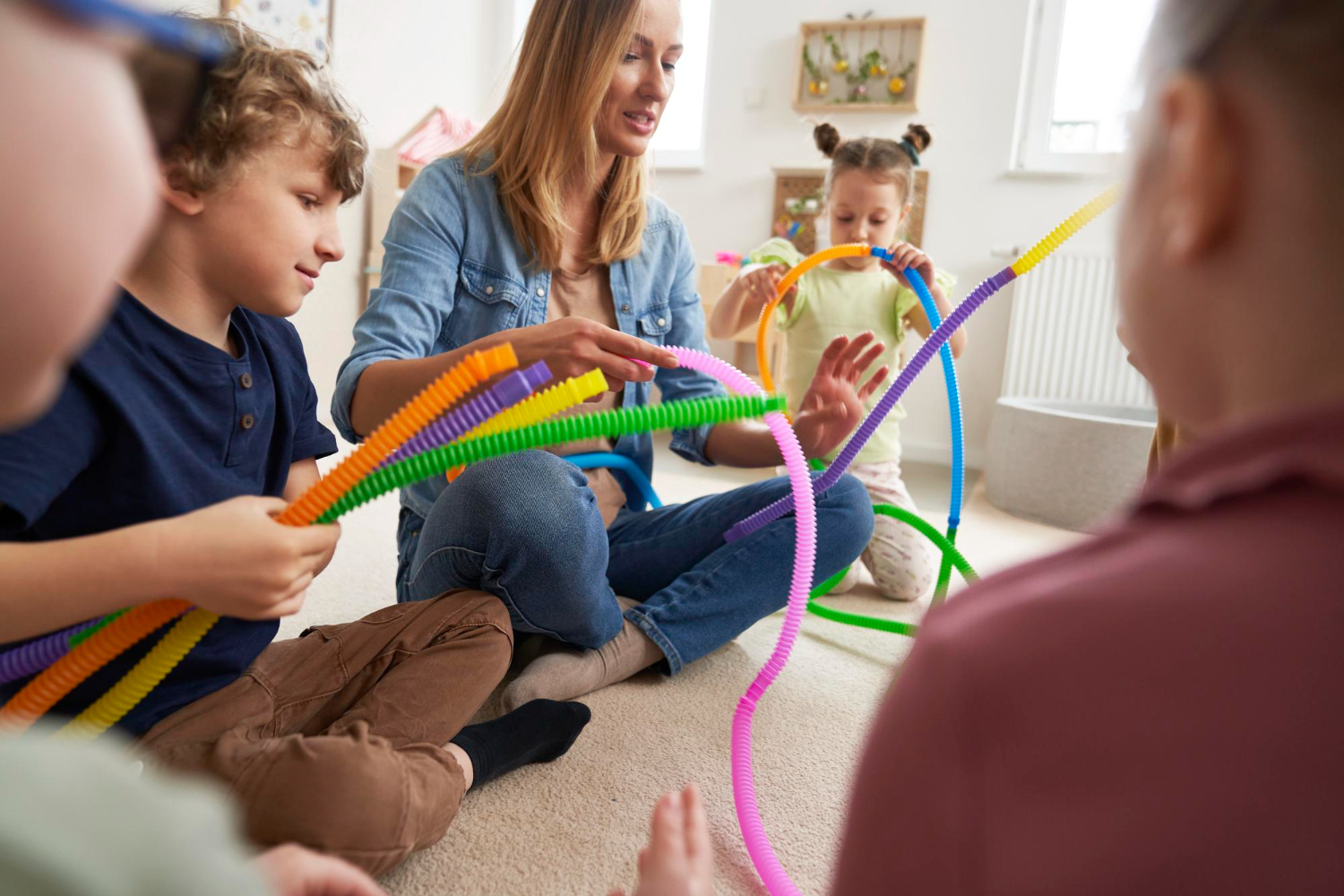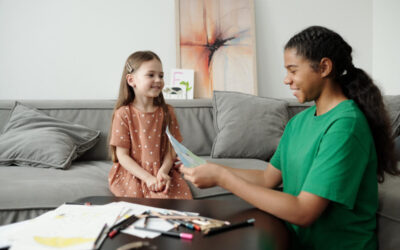At Bloom Healthcare, we believe that every child is unique, and they develop at their own pace. Some children may face challenges that make everyday tasks harder.
Whether it’s trouble holding a pencil, managing emotions or responding to sensory input, pediatric Occupational Therapy (OT) helps children build life skills through play and every day routines.
This guide explains how OT supports child development, when to get it, what happens in therapy, and how to get funding through the NDIS.
Key Points for Parents on Occupational Therapy for Kids
If you’re new to Occupational Therapy, here are the top 4 things to know:
- Occupational Therapy helps with daily skills – Whether it’s getting dressed, eating, handwriting or emotional regulation, Occupational Therapists teach practical strategies to make life easier.
- Early intervention is key – Addressing delays early can prevent long-term problems and significantly support a child’s development. Children’s brains are highly malleable in the early years, which makes therapy more effective.
- Therapy is tailored to each child—OT is not a one-size-fits-all approach. Therapists assess the child’s strengths and challenges to create individualised goal-based interventions.
- Parents play an active role – OT works best when families reinforce strategies at home to support their child’s progress beyond therapy sessions.
What is Pediatric Occupational Therapy?
What Does Pediatric OT Focus On?
Pediatric OT is a branch of Occupational Therapy that focuses on the needs of children, and helps them develop the skills they need for participating in daily life activities. It focuses on:
- Fine motor skills – Holding a pencil, using cutlery, fastening buttons.
- Gross motor skills – Climbing, jumping, catching a ball.
- Play skills – turn taking, sensory, cause and effect and imaginary play
- Sensory processing – Managing textures, lights, sounds or movement responses.
- Emotional regulation – Handling frustration, anxiety or social challenges.
- Self-care skills – Toileting, dressing, feeding, brushing teeth.
- Social skills – interacting with others and making friends
- Cognitive skills – attention and problem solving skills
How is OT for Kids Different from OT for Adults?
For adults, OT often focuses on rehabilitation after injury or illness. Occupational Therapy for adults is often more focussed on making task and environmental adaptations to help a person participate in a task. It could look like ensuring the adult has the right equipment and right level of support to perform a task e.g. dressing or cooking. Occupational Therapy for children is more strongly focussed on the child developing developingskills to help them participate in daily life. Parents and the people around the child play an important part in ensuring the child is supported in every environment to develop their skills. OT intervention is focussed on children learning through play and their every day routines. OT for kids is often fun and engaging, using games, toys and activities based on a child’s strengths and interests to engage them in therapy.
Who Can Benefit from Pediatric Occupational Therapy?
Pediatric Occupational Therapy is a highly beneficial support for children with various needs and abilities.
This type of therapy can be beneficial for children with conditions such as Autism , Down syndrome and Cerebral Palsy. It also supports those with developmental delays or disabilities, sensory processing disorders, and fine and gross motor skills difficulties.
Pediatric Occupational Therapy can also benefit children who struggle with self-care tasks like dressing, feeding, or using the bathroom. It also helps those with learning difficulties or disabilities and physical, psychological, intellectual, or learning challenges.
Beyond these specific conditions, pediatric Occupational Therapy can benefit children recovering from injuries or illnesses. It provides targeted support to help them regain their skills and confidence in daily activities.
Pediatric Occupational Therapy also addresses broader challenges such as sensory processing, self-regulation, social interaction, play, education, and community participation. Pediatric Occupational Therapists work closely with children and their families to identify areas of need and develop individualised strategies to support their ability to participate in daily activities and achieve their goals.
It’s important to note that pediatric Occupational Therapy isn’t just for children with disabilitiesIt can also benefit children who may be slightly behind their peers, experiencing some delays, or want to improve their overall development and abilities, including fine and gross motor skills and self-care skills.
If you have concerns about your child’s development or abilities, consulting with a pediatric Occupational Therapist or other health professionals can help determine if pediatric Occupational Therapy would benefit your child.
How does Occupational Therapy for Kids Work?
Step 1: The OT Assessment
The process starts with a comprehensive evaluation to understand the child’s challenges, strengths and developmental level. This includes:
- Parent and teacher interviews – Families and educators provide valuable information about difficulties seen at home or school.
- Observation – The OT watches how the child plays, moves and interacts with their environment.
- Standardised testing – Tools may assess fine motor skills, coordination or sensory processing.
Step 2: Setting Therapy Goals
After the assessment, the OT will discuss the assessment results with you and work with you to develop therapy goals and an intervention plan focused on areas that would make a meaningful impact for you and your child. Some examples of goals could be:
- Improving handwriting and pencil grip.
- Learning to tie shoelaces or use zippers.
- Managing sensory sensitivities in busy environments so your child can participate at school.
- Developing coping skills for frustration or anxiety so your child can attend community activities.
Step 3: Therapy Sessions & Techniques
Therapy sessions are individualised and designed for your child. They are hands-on and fun, targeted towards your child’s goals, and designed in collaboration with you. Therapy can occur in the home, school or community, depending on where the best environment for learning is for your child. Activities could look like:
- Structured play – Encouraging social interaction and motor skill development.
- Fine motor games – Building hand strength for writing and self-care.
- Sensory play – Using textures, movement or deep pressure to regulate sensory responses.
- Use of visual schedules – Helping children understand routines and transitions.
- Feedback and planning – time spent with the parent at each session discussing what worked and what to practice during the week
Step 4: Parent & Teacher Involvement
OT doesn’t stop after the session – it works best when families and teachers apply strategies in daily life. Therapists:
- Teach parents activities to practice at home.
- Work with teachers to adapt to the classroom environment.
- Provide practical advice on making daily routines easier.
Why Would My Child See an Occupational Therapist?
Parents often wonder: How do I know if my child needs OT?
Signs Your Child May Benefit from OT
- Fine motor skill delays – Trouble holding a pencil, using scissors or fastening buttons.
- Difficulty with self-care – Struggles with feeding, dressing or toilet training beyond expected age.
- Sensory sensitivities – Overreacts to loud noises, textures or food preferences.
- Emotional and behavioural difficulties – Frequent meltdowns, anxiety or difficulty with transitions.
- Learning and attention struggles – Difficulty focusing, following instructions or staying seated in class.
If you notice these persistently impacting daily life, an OT evaluation can determine if therapy would help.
How Can Occupational Therapy Help Kids?
1. Developmental Delays
For children who are slower to reach milestones (e.g. holding utensils, jumping, drawing), OT helps develop and strengthen motor skills.
2. Neurological Conditions
Children with Autism, ADHD or Cerebral Palsy often struggle with motor coordination, attention and sensory processing – OT provides structured support.
3. Sensory Processing Difficulties
If a child overreacts to textures, sounds or lights, OT introduces sensory integration strategies to help them feel more comfortable in different environments.
4. Emotional and Social Skill Development
Many children with difficulty expressing emotions or managing frustration benefit from OT-led self-regulation techniques.
5. Physical Disabilities & Medical Conditions
Children with mobility challenges receive adaptations and assistive technology to help them complete daily tasks.
What do Parents Expect from Pediatric OT?
1. What Happens When a Child Starts OT?
Families can expect:
- A goal-setting session to define therapy priorities.
- Play-based interventions to build skills in a fun way.
- Regular updates on progress and adjustments as needed. Therapy sessions vary – some kiddos make quick progress, and others need ongoing sessions for long-term skill development.
3. How Can I Support OT at Home?
Encourage fine motor activities (e.g., cutting paper, building blocks).
Create routines with visual schedules.
Use deep pressure or breathing exercises for self-regulation.
NDIS & Funding for Occupational Therapy
The National Disability Insurance Scheme (NDIS) provides funding for OT services by covering:
- Assessments, therapy sessions and equipment.
- Capacity building supports the development of life skills.
- Home and school modifications.
How to Apply: Go to the NDIS website and request an assessment from a healthcare provider.
Occupational Therapy (OT) is more than just therapy – it’s a stepping stone to independence and confidence for kids. Occupational Therapy gives kids the tools to navigate the world more easily, whether it’s fine motor skills, emotional regulation or sensory sensitivities.
If you’re wondering if OT is for your child, an early assessment and tailored intervention can make all the difference.
If you have any questions regarding if your child’s needs and if OT would benefit your child and family, please contact us.




